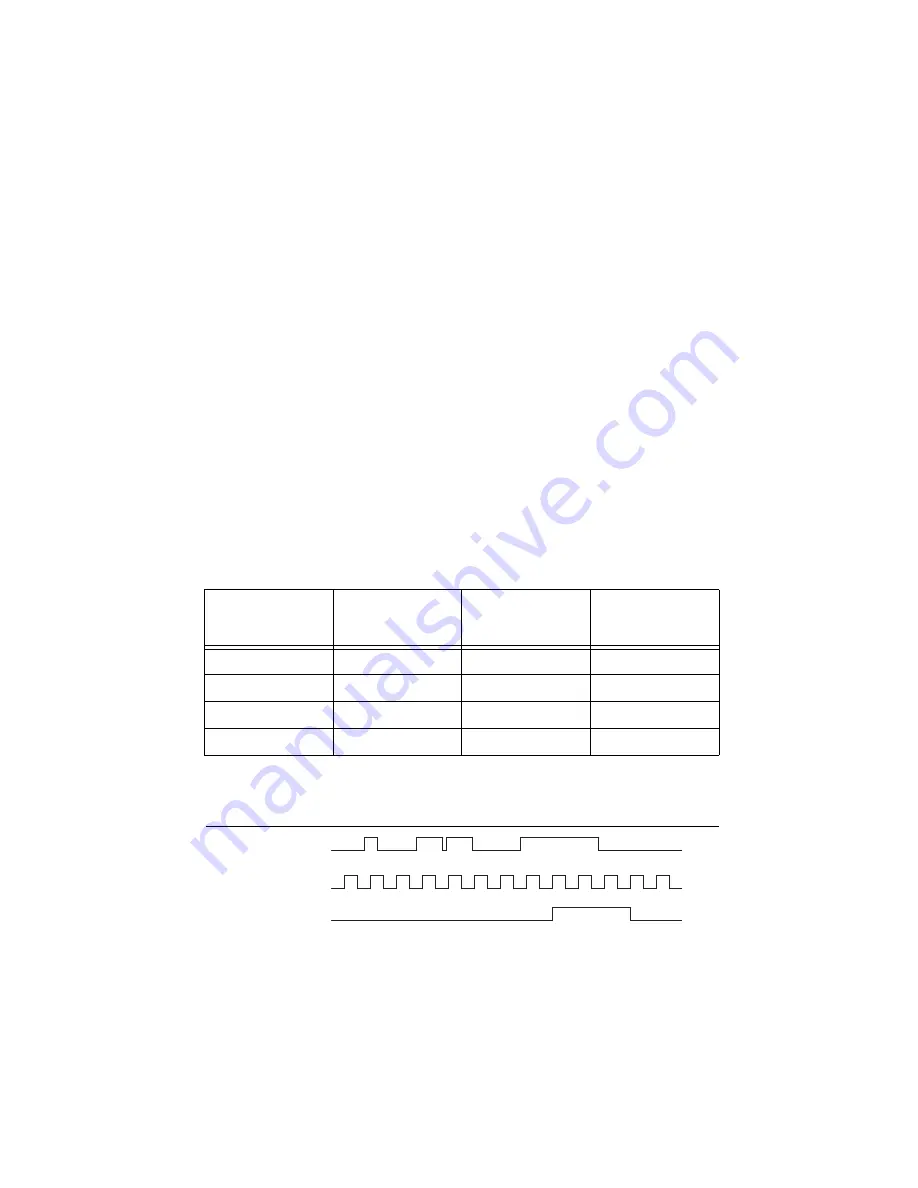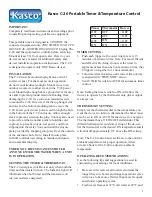
© National Instruments
|
2-17
DI Change Detection Applications
The DIO change detection circuitry can interrupt a user program when one of several DIO
signals changes state.
You also can use the output of the DIO change detection circuitry to trigger a DI or counter
acquisition on the logical OR of several digital signals. By routing the Change Detection Event
signal to a counter, the relative time between bus changes can be captured.
The Change Detection Event signal can be used to trigger DO or counter generations.
Digital Filtering
A programmable debouncing filter can be enabled on each digital line on Port 0. When the filters
are enabled, the device samples the input on each rising edge of a filter clock. The device divides
down the onboard 100 MHz or 100 kHz clocks to generate the filter clock. The following is an
example of low-to-high transitions of the input signal. High-to-low transitions work similarly.
Assume that an input terminal has been low for a long time. The input terminal then changes
from low-to-high, but glitches several times. When the filter clock has sampled the signal high
on two consecutive edges and the signal remained stable in between, the low-to-high transition
is propagated to the rest of the circuit.
The filter setting for each input can be configured independently. On power up, the filters are
disabled. Figure 2-13 shows an example of a low-to-high transition on an input.
Figure 2-13.
Input Low-to-High Transition
Table 2-3.
Filters
Filter Settings
Filter Clocks
Pulse Width
Guaranteed to
Pass Filter
Pulse Width
Guaranteed to Not
Pass Filter
Short
12.5 MHz
160 ns
80 ns
Medium
195/3125 kHz
10.24
μ
s
5.12
μ
s
High
390.625 Hz
5.12 ms
2.56 ms
None
—
—
—
Digit
a
l Inp
u
t P0.
x
Filter Clock
Filtered Inp
u
t
1
1
2
1
1
2
1












































